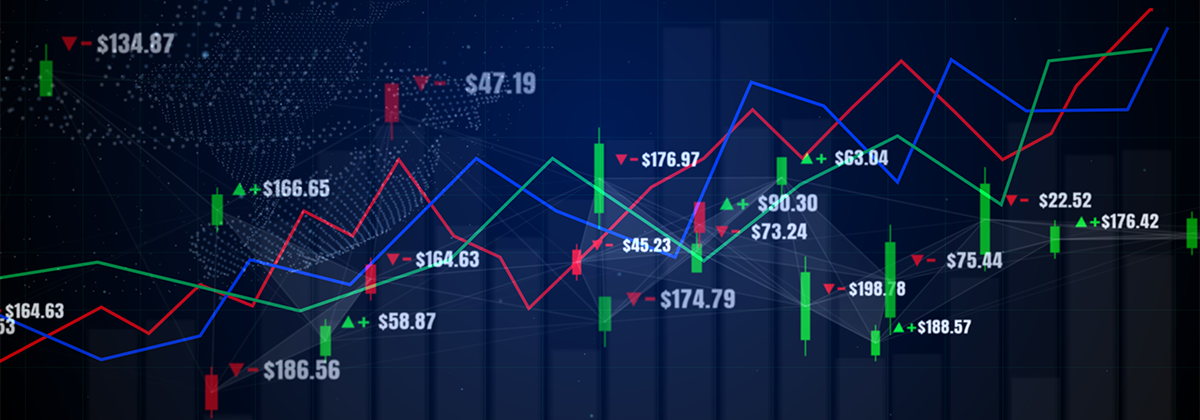3 Forex Breakout Strategies for Beginners

Breakout trading is used to enter into a position in the early stages of a trend. The strategy can lead to major price trends, large price swings, surge in volatility and, if managed properly, can limit downside risks.
Technically, a breakout is a price movement beyond a defined support and resistance area, with increased volume. Depending on the price action pattern, the breakout can be at a horizontal or diagonal level. These support and resistance levels can also be replaced by key levels like Fibonacci levels, pivot points, round numbers, price channels and moving averages.
One reason for quick and sharp price movements, after a breakout, is that these levels are watched by many market participants and when the buyer or seller side is able to push through, the other side has to quickly protect their losing positions.
A trader can enter a long position when the price breaks above the resistance level, or enter a short position when the price breaks below the support level. Once the currency pair trades beyond the price barrier, volatility tends to increase, and prices start to trend in the direction of the breakout.
The strategy works well for all timeframes, intraday, daily or weekly. It can also prove to be a good trading strategy for all trading styles. Here are 3 breakout strategies that can be deployed by beginners.
1. The Momentum Breakout Strategy
The first step here is to identify key support and resistance levels. The two possible scenarios that can occur are:
- A very long bearish candlestick breaking the support level and closing below it.
- A very long bullish candlestick that breaks the resistance level and closes below it.
The very long candlestick here is the momentum candlestick. This strategy can be used for 15-min, 30-min, 1-hr or 4-hr charts.
If a very long bullish candlestick closes below the resistance level, the trader can enter into a long position at the market price. The stop loss can be placed 5 pips below the low of that momentum candlestick. The profit target could be 3 times the stop loss distance.
If a very long bearish candlestick is seen closing below the support level, the trader can enter into a short position at market price. Here, the stop loss could be 5 pips above the high of the momentum candlestick. The profit target could be 3 times the distance of the stop loss.
Since the momentum candlestick is huge, the stop loss distance widens. This is why it could be a good idea to ensure position sizing to minimise risks. Sometimes, the price may not continue in the same direction of the breakout, going sideways, up or down, before continuing again in that direction. However, the strategy is good because not a lot of indicators are used to implement it.
2. The Breakout Pull-up Strategy
Here, there are 2 breakout patterns that can manifest in price action.
- Identifying a key support and resistance level with a minimum of two touches. Two touches indicate a greater probability of order flow behind that level. The more the number of buyers or sellers present at a level, the greater the chances of a successful breakout.
- Reduction in pullbacks from that support or resistance level. Here, it is key to identify breakout setups that are forming with the trend. For instance, a weaker pullback from bears signifies less strength from that side. This results in greater confidence for the bulls that a breakout is inevitable and produces an eventual breakout.
Once these levels are identified, a trader can proceed on the strategy. If the price closes above the key support or resistance level, a limit order can be placed to trade in the direction of the breakout, on that particular level. Once a qualified breakout has been spotted, there will be sufficient order flow on that level from big players. So, a trader can take a long or short position on a pullback to that level. There will be no need for any confirmation signals.
To avoid false breakouts, traders can:
- Trade with the trend, whenever possible
- Learn to identify and read the context of the price action.
3. Moving Average Breakout Strategy
The best timeframe for the Moving Average breakout strategy is the H1 chart. The 25-period Simple Moving Average (SMA) is used here. Traders need to be familiar with the ABC pattern.
The figure here is a bearish price action. The price action started at point A and made a breakout at the highlighted point.
This bearish breakout happens at a level that was previously a support level. Let’s assume that price moves from point A to point B and then starts a pullback, which is denoted by C in the figure. Point C is the beginning of a new bearish trend. Traders wait for a reversal candle to form at point C and then trade using it.
Point C, in both bearish and bullish breakout, will occur at the moving average that keeps it going. So, C is not constant, and keeps on shifting, depending on whether it is a horizontal breakout or trendline breakout.
After making a pullback up to C, if the price heads downwards, a breakout at the lowest low of the trend can be expected. The candle that forms at that juncture is the entry candle. A bearish candle means short entry for sellers.
Here, remember that the breakout needs to have a strong momentum. The price has to pull back to the moving average level and hold there. A reversal candle then needs to form at the moving average level at the time of the pullback. The entry can be made after another breakout at the trend’s highest high or lowest low.
Reference Links
- https://www.dittotrade.academy/education/beginner/trade-strategies-beginners/a-moving-average-breakout-strategy-for-the-beginners/
- https://www.investopedia.com/articles/trading/08/trading-breakouts.asp
- https://forextraininggroup.com/a-step-by-step-guide-to-trading-breakouts-in-forex/
- https://2ndskiesforex.com/trading-strategies/forex-strategies/trading-forex-breakouts-strategies-patterns-price-action/
- https://forextradingstrategies4u.com/momentum-breakout-forex-trading-strategy/







